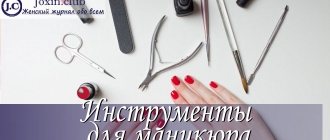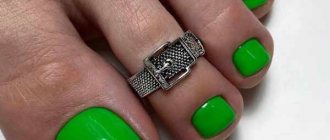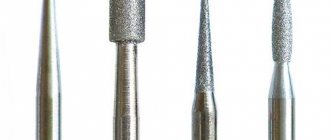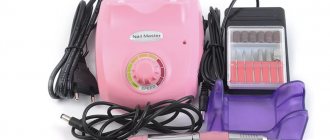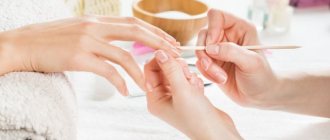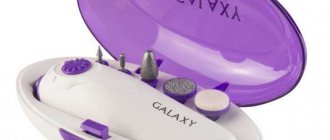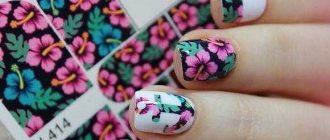Extensions are now a fairly common cosmetic procedure that promotes artificial lengthening of the nail plate and the possibility of correcting its shape and style, despite the condition of natural nails.
Because of this, many girls prefer to do the technique at home in order to save money. To obtain a positive result, it is first recommended to pay attention to what is needed for nail extensions, since the final result depends on the availability and quality of consumables, compositions, and tools.
The degree of abrasiveness of the file: what do grits mean?
The abrasiveness of the file is the main selection criterion. It determines what the tool can and cannot be used for. The degree of hardness is indicated in grits and is often indicated on the file itself.
We advise you to follow a simple rule - the lower the number, the tougher and rougher the working part.
Hardness 100/100 grit
These are the hardest files that are suitable for filing when extending, correcting and removing artificial nails. Large coarse abrasive allows you to work with biogel, acrylic and tips.
SELECT
Hardness 100/180 grit
Such files are rigid enough for processing material: adjusting the shape, cutting length when extending. In addition, they can be used for pedicures if you need to file hard or thickened toenails.
SELECT
Hardness 180/240 grit
Tools of such abrasiveness are considered classic. It is suitable for the material and natural nails: it gives shape, files the edge, forms an arch and adjusts the length. With its help, you can prepare the plate for extensions and quickly remove gel polish if you use liquids. The rigidity is enough to damage the integrity of the coating, but the abrasive is not capable of damaging the nail.
Soft files with an abrasiveness of 240 grit are used for soft and weakened nails. They also allow you to remove scratches on the plate after rougher processing.
SELECT
Please note that there are files with different abrasives. One side is rough, the other is soft: for example, 100/180 or 180/240. It's convenient; you don't need to change tools often.
Basic set of nail extension tools
Even when performing the procedure at home, everything for nail extensions should be at hand. The multi-stage technique has many features and nuances that are important to take into account to obtain a positive result.
Tools for nail extensions must be sharp and properly prepared, otherwise you will not be able to carefully process a natural manicure.
UV lamp
The main device on which the efficiency of drying the decorative coating depends. Gel polish always needs to be polymerized in a lamp, so you need to prepare it in advance.
In general, there are three types of lamps that can be used to dry extensions:
- Ultraviolet;
- LED;
- Hybrid.
Different devices are suitable for different compositions, so first pay attention to the characteristics of the material that you are using to artificially lengthen the free edge.
To properly dry your work, preventing the formation of leaks, you should choose a lamp with a power of 36 W or more.
Nail files
Files are a mandatory tool that needs to be used to correct the shape of the free edge before extensions. It is recommended to choose files with a cardboard base rather than glass or metal. The latter are more aggressive relative to a girl’s natural nail and can damage the location of the stratum corneum, leading to detachments.

Files are also used to cut off gloss from gel polish before removing it using a remover. Because of this, you need to choose them with different abrasiveness.
You need to move the file in one direction while working so as not to disrupt the integrity of the nail structure.
Pusher
An obligatory stage in the processing of natural manicure is cuticle correction. There are two methods of working with it - classical and European. The first involves cutting off the keratinized epidermis, and the second only involves gently moving it away.

For both methods, a pusher is used. For ease of work, you should first apply a cuticle remover to soften the cuticle.
You can replace the metal pusher with regular orange sticks. In the salon they are used once, but at home they can be used several times.
Modeling Brushes
The main essence of extensions is to apply gel or acrylic powder to artificially lengthen the free edge. As a standard, the gel kit does not come with a brush, so you first need to pay attention to its selection.
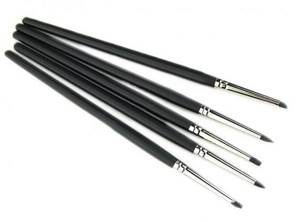
You need to prepare brushes of two sizes - wide and small. The first is to distribute the base over the entire nail during extensions, and the second is to draw a neat cuticle line.
It is recommended to choose brushes based on silicone fibers. This way, any material will spread more evenly, and less composition will remain between the fibers.
Four-way buff
Another mandatory step in nail pre-treatment before applying compounds is buffing. The material is a small sponge, the different faces of which have different abrasiveness.

As a standard, the sides of the buff contain the numbering of the steps to use it. Gradually, the nail plate is sanded and then polished. This technology ensures deeper and more thorough penetration of the primer into the nail structure, which increases adhesion to the decorative coating.
What are buffs and what are they for?
Essentially, buffs are small, very soft files. They are used to process the plate under the coating, polish the nail and skin.
Manufacturers may specify hardness differently. Some classify a tool with an abrasiveness of 240-500 grit as a buff. It allows you to sand down small irregularities and prepare the plate for varnish or gel polish. Others, such as SMART or Lisanail, produce buffers with a hardness of 100, 180 and 240 grit and recommend using them for artificial, gel-strengthened and natural nails, respectively.
SMART
premium
SMART
standard
LISANAIL
pumps
LISANAIL
blocks
Full list
Anyone who wants to have well-groomed hands and a beautiful manicure needs to have in their arsenal a list of the following items:
Nail files
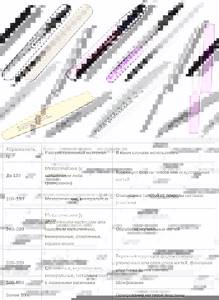
Types of files according to abrasive properties.
Files are needed for filing the natural nail plate and extended gel nails. Among their huge variety, you need to focus on the level of roughness of the tool. It is measured in grits; the lower the number, the rougher the file. For example, an 80x80 grit product is used only for artificial nails; it can damage natural ones. For them, the optimal working file is a product with 180×240 grit. Usually this is what is used, and for artificial ones a 100×100 file is used.
For personal use, they are purchased in pairs, and if you intend to use them to perform manicures for clients, then you can safely purchase files in batches in large quantities. Professional craftsmen make separate files for each of their regular clients.
The choice of their shape depends on the preferences of the person who is going to use them regularly; some like products in the form of a boomerang, others choose the classic straight shape.
Ultraviolet lamp for home

There are several types of lamps: UV LED, CCFL or CCFL+LED. The picture shows UV LED.
This is an indispensable attribute of nail extensions; it is necessary for any type of manicure; even a simple coating with varnish will go faster if you use a lamp after the next application of a decorative product. And the gel material simply won’t harden without it. To use it at home, you shouldn’t save on it, but you don’t need to overpay either: the stylish design of the lamp will not affect the quality of the manicure in any way, and the effect of the special functions is very doubtful, for example, the same blower will not significantly reduce the drying time.
You can find out more about Avon gel polish here in this article.
You can read how to paint nails with gel polish in this article.
What is a starter kit for covering nails with gel polish is indicated in this article here: https://soinpeau.ru/kosmetika/dekorativnaya/lak/startovyj-nabor-dlya-pokrytiya-nogtej-gel-lakom.html
This article will help you find out the price of a lamp for drying nails with gel polish.
Its power must be at least 24 watts; the best option would be to purchase a 36-watt lamp that has a timer.
Lamps are roughly divided into two types:
- household , in which their power reaches 36 watts;
- professional , comes with an indicator above this value.
Their cost will be influenced by additional functions: touch monitor, presence of a fan, retractable bottom and others, but they should be considered only if the lamp is used for professional purposes.
The information here will help you find out what the chemical composition of nail polish is, as well as how harmful this polish is to health.
Buff
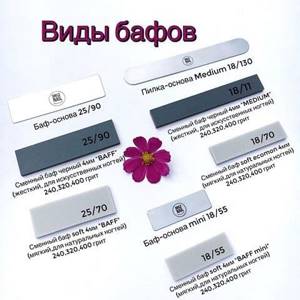
Types of buffs
This is a modified file for natural nails, which is a block with a square section. Its inner part is made of foam rubber, and the outer part is covered with sandpaper. The resulting dust from sawdust should be shaken off with a brush with artificial bristles. It, like its analogues, ordinary files, comes in different grits. The most common indicator is 120x120x120, but in the process of work, each master chooses a buff file “for himself.”
Wire cutters
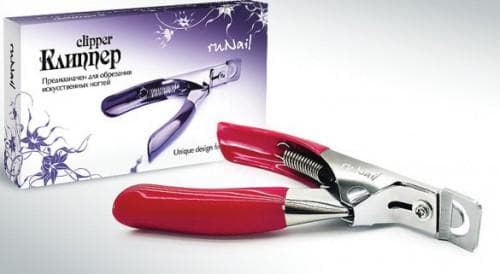
Always inquire about the material from which the instrument is made. Give preference to stainless steel - this metal will withstand sharpening and any disinfection - thermal or chemical.
Cuticle nippers are needed to remove cuticles; they can be used to carefully remove unnecessary hangnails without injury, even if the capillaries are located too close. According to experts, Stalex wire cutters are the best. They cope with the task better than trimmers and scissors. They are often used with cuticle remover gel.
Pusher

The first criterion that should be followed when choosing a pusher is the width of your nails. The narrower the nail plate, the narrower the pusher’s shoulder blade should be.
This is a metal tool, on one side of which there is a spatula for pushing back the cuticle, and on the other side there is a small tip, reminiscent of a small knife. For ease of use, its holder is corrugated.
Orange sticks
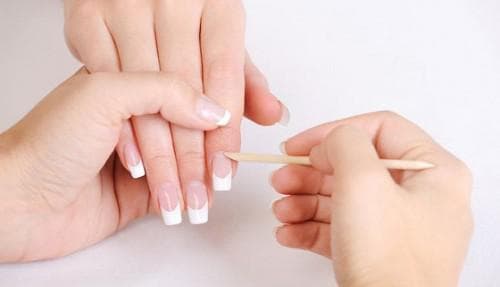
The sticks got their name due to the material from which they are made – orange wood. It’s just that this tree has a soft but dense structure, which does not allow the sticks to delaminate and injure the nail.
They are multifunctional and can replace a pusher. They are used throughout the entire nail extension process; they can be used to glue rhinestones, apply simple designs, and correct the spreading of the gel. They are able to cope with many problems that arise during the extension process.
Brushes
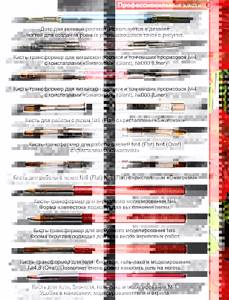
To carry out the procedure, you will need a set of them for uniform application of the gel, as well as for its modeling; in the latter case, you need to choose a flat brush with artificial bristles.
Boat
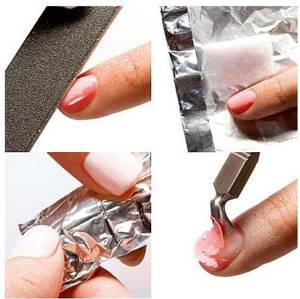
Designed for shortening tips or a thin layer of acrylic or gel. This is a type of wire cutter that is used to reduce the length of tips.
Brush

To avoid damaging your skin, choose brushes with soft bristles.
A small plastic product with synthetic bristles that will sweep away dust from nails when filing them.
File shapes: how to choose and use correctly
The second important selection criterion is shape. It determines how comfortable it is to hold the file in your hand and for what purposes it is suitable.
There are several basic forms:
Boat.
It gives an increased sawdust area, therefore speeds up the process. The rounded middle part allows you to carefully treat the cuticle area.
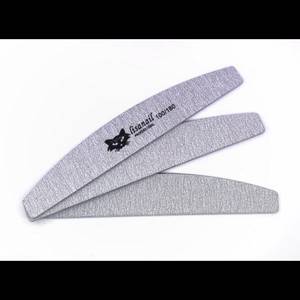
Boomerang.
A traditional shape that is convenient for processing the free edge and allows you to avoid turning the client’s hand over.

Straight wide.
A universal file that is suitable for modeling, free edge filing, plate surface and architecture.
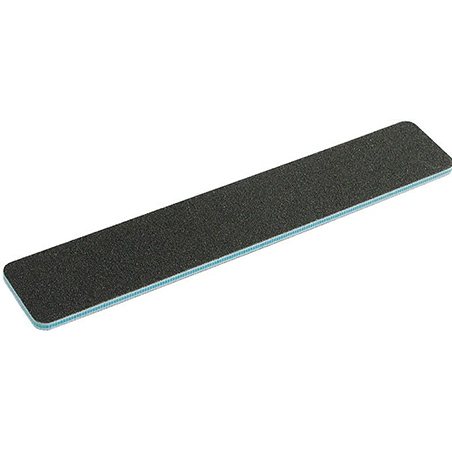
Straight narrow.
Another classic shape, used for the same purposes as the wide one. Narrow files are often chosen for natural nails, while wide ones are used for extensions.
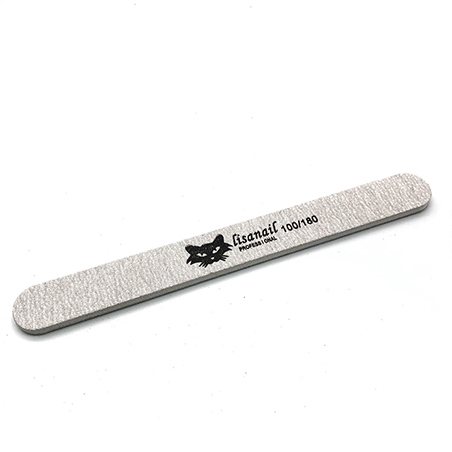
Rhombus.
A file with a stiffer center is convenient for cutting shapes, including squares on long nails, and working near the cuticle.
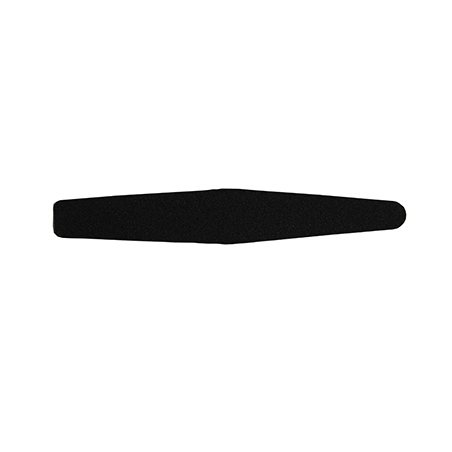
Grater.
A special form of pedicure files designed for treating the skin of the feet.

Choosing a manicure file according to its shape is also a matter of comfort. The master himself determines which tool is more convenient for him to work with, and can deviate from the recommendations.
Types of nail files
By purpose
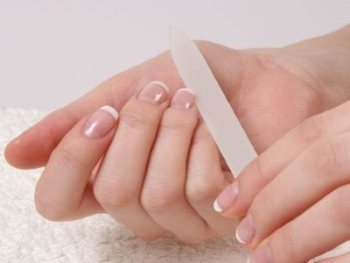
Shaping your nails
They can be used for
- shortening the nail,
- giving shape to the nail plate,
- polishing,
- grinding,
- removing extended or ingrown nails,
- removing gel polish.
By material
| Material | What is it used for? | What nails is it suitable for? |
| Metal | Working with hard nails | For pedicure or men's manicure, for artificial nails |
| Glass | Shaping, shortening length | For natural |
| Ceramic | Carefully evens out the shape and seals flaky ends | For exfoliating natural |
| Cardboard | Shaping | For fragile and thin |
| Emery | Shaping | For fragile, weakened |
| Wooden | Sanding and polishing, treatment of foot skin and nail folds | For all types |
| Diamond | Grinding, filing | Artificial and natural |
| Plastic | Shaping | For fragile and thin |
| Laser | Corrects length, cleanses cuticles, removes rough skin | For all types |
| Khrustalnaya | Polishing | For natural and artificial |
| Corundum | Shaping, shortening length | For natural |
Types of nail files by material
By shape
Boomerang file
- Straight (leveling and shaping),
- oval (shortening and giving a rounded shape),
- curly (made in an unusual shape),
- boomerang bananas (used mainly for processing cuticles during extensions),
- buffs (for grinding and polishing).
By abrasiveness (hardness)
- From 80 to 100 grit (grit is a unit of hardness) – perfect for correction when extending nails;
- from 120 to 180 grit – used for extended nails;
- from 220 to 320 grit – ideal for shaping;
- from 320 to 400 grit – recommended for thin and weakened nails;
- from 500 to 900 grit - used for grinding;
- over 1000 grit - used for polishing.
A universal hardness is considered to be 200 – 300 grit. This file can be used on any nails to perform cosmetic repairs.
The abrasive can be natural (silicon carbide) or artificial (pumice).
The video will complement your knowledge about the abrasiveness of nail files.
SMART files: how are they different from regular files?
SMART files and buffs are among the TOP manicure tools. Their key difference from the rest is removable files.
Base files in the form of a boat, grater and straight narrow shape are made of surgical steel and have different lengths and widths. They are used together with disposable adhesive-based files, which are replaced after the client. A set of such attachments of different hardness will allow you to create a complete manicure.
SMART
the basis
SMART
premium
SMART
standard
Extension options
There are two ways to do nail extensions
Tips - similar to artificial plastic nails. They are glued to the surface of your nail using a special glue, and then its shape is adjusted depending on your preference.

On forms - Thanks to such forms, the master models the nail directly on them, and then, when the gel has cooled under the lamp, removes them and files them.

Base materials: files for home and professional manicure
When choosing a tool, you need to consider what material it is made of. This is also important for the quality of manicure, safety and hygiene.
Which files are suitable for which nails and conditions of use:
- Cardboard or foam.
These files are suitable for natural nails, but quickly become frayed. They cannot be sterilized, so they can be used for personal purposes at home or need to be changed after each client. - Wooden.
As a rule, pedicure files and graters have a wooden base. When choosing, pay special attention to quality so that the abrasive part does not come off ahead of time. - Metal.
A well-known tool that is recommended to be used exclusively for pedicures or the treatment of thick nails. They are often small in size and not very convenient for professional work. - Glass.
These files are suitable for natural and artificial nails. They can withstand disinfection with disinfectant solutions, but require care as they break easily when dropped. - Laser.
A new type of tool for professional use. Files can have a plastic or metal base, but they differ in the structure of the abrasive and “seal” the nail. This makes the edge perfect - it does not flake, does not have burrs and is protected from water.
The method of processing depends on the material of the file.
Cardboard, foam and metal files with a plastic handle are manually cleaned of dust, wiped or sprayed with disinfectants.
Glass and all-metal instruments, as well as laser files, can be disinfected in a sterilizer or UV cabinet; wooden ones are treated with antiseptics. That is why they are suitable for salon manicures where hygiene and safety are important.
Necessary materials
In addition to the tools used for work, pay attention to the preparation of consumables and compounds that will be applied to the surface of the plate.
Gel
The main composition, which is used for extensions. It is spread over the mold and then dried in a lamp, creating a dense coating.
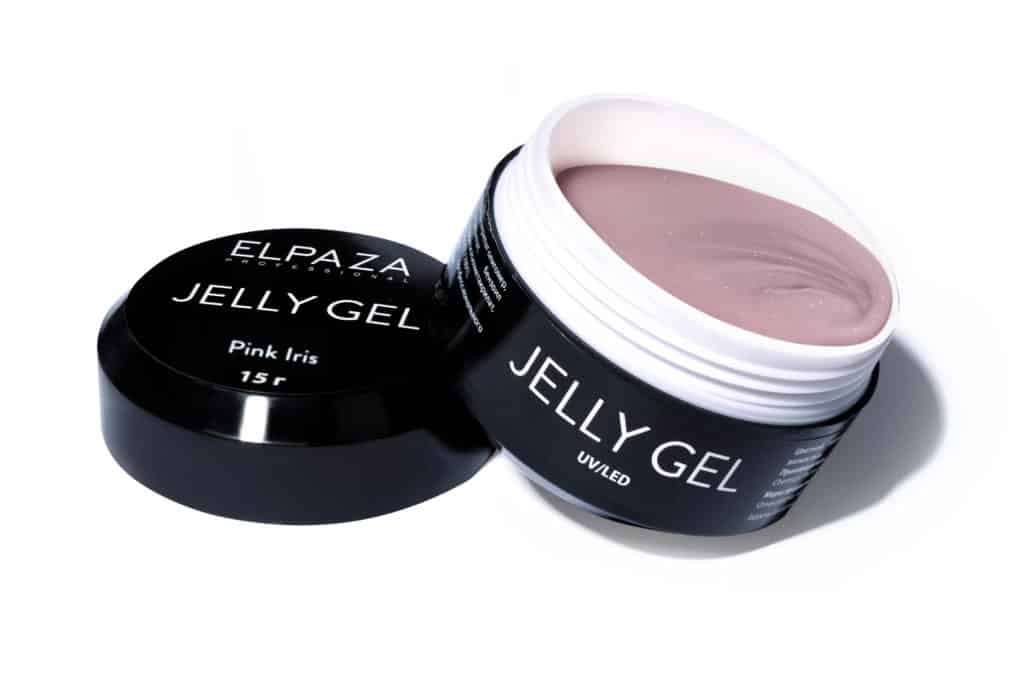
There are two variants of the basis used for the technique:
- Gel. A special gel that has a fairly thick consistency, which makes it quite difficult to distribute it evenly over the nail bed. The porous structure of the gel ensures that the nails remain in good condition when worn.
- Acrylic Powder. The powder is mixed with the liquid to a homogeneous consistency, and then the solution is distributed over the nails. Often acrylic has a rather aggressive effect on the sensitive area, which is why it is used less often.
The options differ in the method of preparation and application, so it is recommended to choose from them based on the girl’s convenience.
Tips
An alternative to extensions onto forms is tips. They are ready-made designs of artificial nails (blank or already designed), which you simply need to attach to your fingertips.
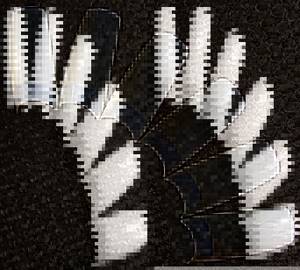
To fix the tips, a special manicure glue is used, which firmly bonds them to a smooth surface.
The main difficulty of working with tips is that you first need to pay attention to their selection, based on the size and shape of natural nails.
Primer
The primer should not be confused with a bonder or degreaser; all three compositions represent different stages of preparing the nail plate for applying a decorative coating.
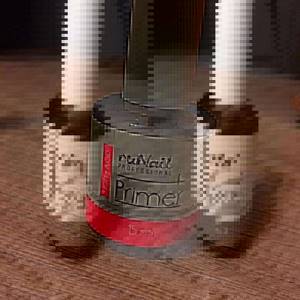
The primer is needed to increase adhesion to the gel polish, which is why the pigment remains in the same state for up to a month or more. It is not a polymer, so it hardens spontaneously 20-30 seconds after application.
Cuticle oil
Any correction of the nail plate involves careful treatment of the cuticle. It involves cutting off the keratinized epidermis or simply pushing it aside.
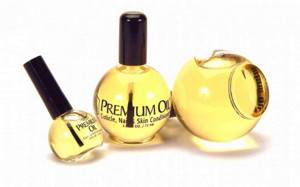
In order to prevent the rapid growth of the cuticle after the end of the manipulations, to make it visually neat and natural, at the end of the session, nail technicians often apply a special oil to it. It will moisturize the epithelial cells, nourishing them with microelements. The oil should also be used after visiting the salon - 2-3 times a week before bed.
Finish
To prevent premature convergence of the extension result, you need to cover the gel polish with a finishing layer - top. It is applied in a thin layer, including the end of the plate, and then dried in a lamp for a minute.

The use of a finish should not be neglected, as it preserves the glossy shine of the nails and prevents chips and cracks for a long time.
At the end of the session, most often you need to remove the sticky layer from the top. For this, a special cleaner and a lint-free cloth are used; the solution can be replaced with a degreaser.
Sterilization products
A mandatory stage of preparation for extensions is disinfection of instruments. It needs to be carried out, regardless of how you stored it and how many people use it as a standard.
For home disinfection, you can use a regular alcohol-based antiseptic, which destroys most pathogenic microflora.

Salons use special ovens and the method of soaking instruments in an alkaline solution, only after which they are treated with an antiseptic. This three-step cleaning procedure for the devices used will ensure their absolute cleanliness and sterility; they can only be touched with gloves.
If you miss this step, if you accidentally damage the periungual area, you risk introducing dirt or infection into the body by transferring it through unsterile instruments.
How to use files correctly
Despite the fact that saws are a well-known tool, errors can occur when working with them.
To ensure that your clients are satisfied with the quality of their manicure, follow these simple tips on how to use a nail file correctly:
- File the nail in one direction towards the center. Moving the file back and forth leads to roughness and the appearance of burrs.
- Do not file natural nails after hand baths. The plate must dry out, otherwise it will peel off after processing or break during sawing.
- Use files of suitable abrasiveness. A working part that is too hard can leave scratches and deeply damage the nail.
- Disinfect the tool. If sterilization or treatment with disinfectants is not possible, change files or attachments after the client.
- Don't forget about polishing and oils. They will make the nail glossy, soften and moisturize the cuticle.
“Sterille Store” will help you choose and purchase good nail files for professional work and all manicure operations. We sell tools from trusted brands, deliver orders throughout Saratov and ship to the regions.
Mertz sealing file

Working surface of a Mertz soldering file
Has a laser treated surface. It is ideal for thin and brittle nail plates that are prone to splitting and is used to seal them.
When filing, such a file provides perfectly smooth edges, since all layers are combined into one and sealed . Thanks to this, the nail plate looks healthy and well-groomed.
Best Glass Nail Files
Glass files are considered one of the most reliable, easy to use and gentle. This tool is suitable for daily use; it polishes the surface of both natural and artificial plates equally well. Of the 8 best glass nail files, the TOP includes the two most popular models among customers.
Velganza Glass Nail Shiner Vel3
Velganza Glass Nail Shiner Vel3 gives the plate a beautiful shape and has a lamination effect. The tool is made of heavy-duty tempered glass, so it is durable and has a high quality surface finish. The file has an original patented design. The composition is completely free of any toxic substances, which makes it possible for its use by children and pregnant women.

Advantages
- Convenient shape;
- Seals the coating and prevents their delamination;
- Protects the surface from the effects of household chemicals;
- Completely cuts down damage;
- Gives the surface a natural shine;
- Original design.
Flaws
- A bit expensive.
The Velganza Glass Nail Shiner Vel3 file is a real find for connoisseurs of high-quality and safe manicure. Some users note that the tool polishes well, but in order to form the necessary cut, you need to make some effort.
Bohemia 1402b, purple
Bohemia 1402b is intended for professional manicure. This glass file has two working surfaces, which allows it to last longer. Unfortunately, it is designed only for the care of natural nails. The tool is characterized by a high level of safety, but despite this, it is quite sharp.
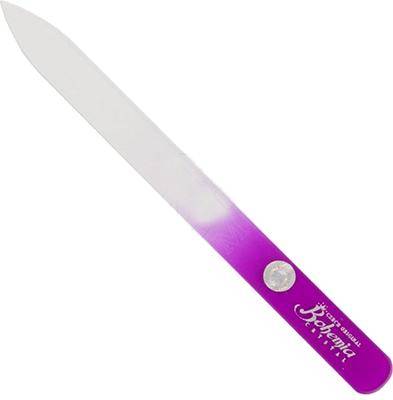
Advantages
- Durable;
- Gently and smoothly cuts the length;
- Convenient case;
- Does not leave rough edges;
- Suitable for professionals;
- Prevents plate delamination.
Flaws
- It is fragile and if dropped, some of it may break off.
The Bohemia 1402b file has positive reviews from both ordinary users and manicurists. Professionals appreciate how softly and smoothly it cuts. True, experts advise buying several tools at once, because if you work carelessly, the product may break.
What is abrasiveness
Files differ in their level of abrasiveness (hardness). Below are typical designations and their corresponding stiffness values:
- 80 is the toughest
- 100 - very hard
- 120 - hard
- 180 - medium hardness
- 220 - average
- 320 - softer than average
- 400 - soft
It is easy to guess that the softest files (the abrasiveness of which is 320 and 400) are mainly used for filing natural nails. The most common are double-sided abrasive tools 100/180: a hard surface designed for processing extended nails. The rough side (which has a value of 100) is convenient for removing length and leveling the surface of the nail if it is very bumpy. Using a softer surface (180 abrasiveness) we give the nails shape and smooth out minor unevenness. If you don’t know which tool you need to start with, then take 320 grit, it will be useful to you in any case. The delicate, fine-grained surface is suitable for sanding and finishing.
